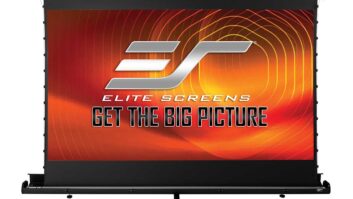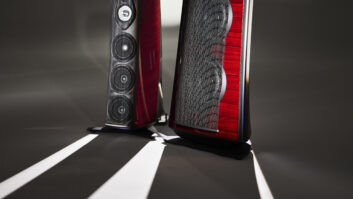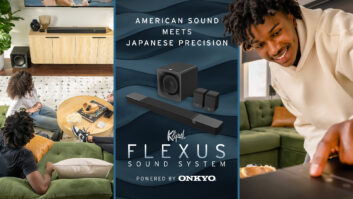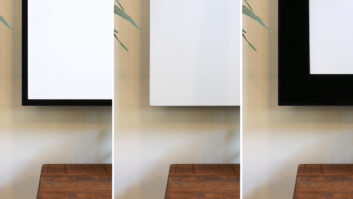Probability is high that you’ll be asked to install a front projection system with 3D capabilities soon if you haven’t already. Between massive advertising being pummeled into the collective conscious of consumers to manufacturers racing to ensure that their products are competitive in the features column, 3D is making its way into projectors at lower and lower price points and making consumers feel they must have this capability to continue enjoying life. There’s more to designing one of these systems than just throwing up a 3D projector, hanging a screen, handing out some glasses, and dazzling your client into another dimension.

A rendering of Stewart’s Silver 5D screen in action
Active or Passive? If you’ve viewed much 3D programming, you’ve probably developed a preference toward one method over the other. George Walter, Digital Projection’s VP of Home Cinema, commented, “End users prefer watching 3D in a passive environment. The glasses are lighter, they pass more light (allowing a more social experience with other viewers), and they are generally more comfortable.”
Proper Screen Selection. Passive 3D systems require using a silver polarization retention screen. These materials, however, can compromise 2D viewing. And since the vast majority of content is 2D, you wouldn’t want to compromise that. Walter suggested, “The best solution would be to have two screens; one silver, dedicated for 3D, and one selected for optimal 2D viewing.” Barring a two-screen approach, some manufacturers have developed materials meant to produce the fewest image compromises for both 2D and 3D viewing. One advantage of active systems is that any screen material will do, though a higher gain model will help offset some of the light lost through the 3D filtering process.
Bigger is Better. A huge reason why people opt for projection in the first place is for a larger, more immersive experience. This plays right into 3D’s strengths. “The 3D viewing experience gets better and is much more involving as you get larger and approach image sizes that fill up your peripheral vision,” Walter said.
Screen Innovations director of sales, Blake Vackar concurred, saying, “It is best to view 3D content on a screen that is 100 inches or larger.” The only drawback to the large screen size is that it requires more projector light horsepower to drive.
Seating Considerations. As viewers start sitting off-center, chances of image artifacts are substantially increased, especially as you use higher gain screens. “The more offset the viewer is, the greater the possibility of getting 3D shadows in the image or ‘double vision,’ neither of which is enjoyable,” Vackar explained.
And, for the best 3D image you’ll likely need a high-gain screen. “3D screens tend to have elevated gain for recovery of filter insertion losses,” Stewart Filmscreen’s president, Grant Stewart said, “so they are more directional than reference home theater screens.” This means that viewers should be clustered in seats near the middle of the room.
Stewart suggests following SMPTE guidelines for seating distances, “In general between 3 and 3.3 times the image height is a very workable figure for home cinema 2D or 3D,” he said.
Other Considerations. Beyond obvious home theater design elements, like keeping proper sightlines and making sure that there is adequate coverage for all viewers glasses to be in range of receiving the sync signals in active systems, Walter stressed eliminating anything that can create a distraction. “The whole 3D experience involves trying to trick your brain,” he said. “You need to relax enough for your brain to say, ‘I’m being tricked, and it’s OK.’ Anything in the environment that distracts the viewer is going to be a detriment to the 3D experience.”
John Sciacca is a principal with Custom Theater and Audio, in Myrtle Beach, SC.







